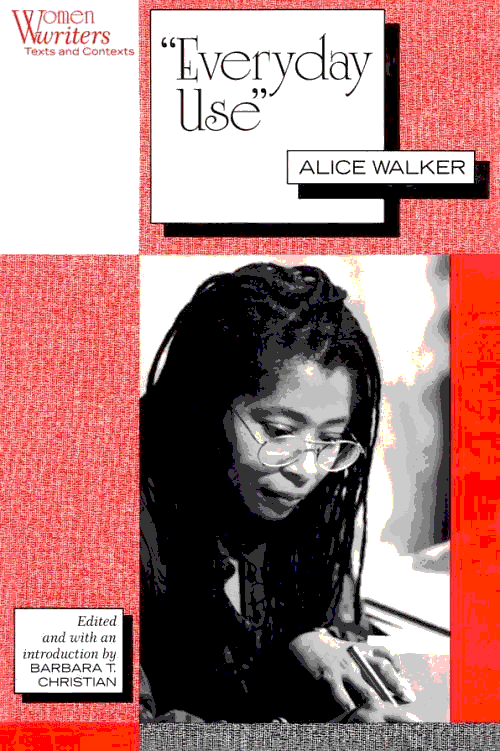
Back to
Writings
Review of Everyday Use
* Disclaimer *
Perhaps the most resonant quality of quilt making is the promise of creating
unity amongst disparate elements, of establishing connections in the midst of
fragmentation. (Kelley 176)
Walker's peculiar sound, the specific mode through which her deepening of
self-knowledge and sell-love comes, seems to have much to do with her
contrariness, her willingness at all turns to challenge the fashionable belief
of the day .... (Christian 124)
Since its publication in 1973 in the collection of stories In Love and Trouble,
Alice Walker's short story "Everyday Use" has become very popular--probably the
most anthologized of her stories (Winchell 80)--and it clearly merits such
critical acclaim. In 1994, the story was honored by a critical edition published
in the Rutgers University Press series "Women Writers: Texts and Contexts."
Paralleling the success of Walker's story has been that of another cultural
artifact, the quilt, which since the Sixties has undergone a rather spectacular
revaluation, moving from the marginalized position it held as a symbol of
gossipy women's sewing circles, to becoming by the Seventies the "central
metaphor of American cultural identity" (Showalter 215). One of the intentions
of the Rutgers critical edition is to indicate a link between these two success
stories. As Barbara Christian writes in the first paragraph of her introduction,
it is in "Everyday Use" (1973) and "in her classic essay 'In Search of Our
Mothers' Gar dens' (1974) that Walker first articulates the metaphor of quilting
to represent the creative legacy that African Americans have inherited from
their maternal ancestors" (3). While Walker was not the first to write about
quilts, she was one of the first to write of the value of the quilt in the
Afro-American experience, and she has certainly been one of the most influential
writers in rearticulating the value of the quilt and in contributing to its
success in the collective imagination at large.
If it seems clear that the popularity of the quilt owes much to writers like
Walker, one needs to ask, in turn, whether Walker's story would enjoy its
current status if the quilt itself had not become such a privileged symbol. And
yet another way of formulating this kind of question would be to ask whether we
are to read the quilt as a figure in a story, or whether the story is, as it
were, a figure of the quilt. Is the quilt, in other words, to be seen as one
sign of women's creative activity among many, or as the very ground of a
specifically woman's world?
How such questions might be answered is largely dependent on whether another
significant characteristic of Walker's work is taken into consideration. As the
epigraph above from Barbara Christian notes, central to Walker's work is a
certain kind of "contrariness," a "willingness at all turns to challenge the
fashionable belief of the day." And if the symbolic value attributed to the
quilt can be taken as a "fashionable belief of the day," we might have a
dilemma, since the very story which surely contributed to the success of such a
belief could likewise be questioning it, and this would produce a dilemma, as
well, for those critics who want to ensure that Walker holds an honored place in
the history of quilting and who likewise feel that any questioning of that
history would be dishonoring it. If there were any hint that such contrary
questioning were coming from Walker's work itself, then perhaps a critic would
be tempted to avoid a close reading of her text in order to avoid risking having
to deal with suc h a disruption.
In Spite of It All: A
Reading of Alice Walker's "Everyday Use". (Critical Essay)
Author: Sam Whitsitt
Issue: Fall, 2000
Page Created by:
Alison Joy Burroughs

